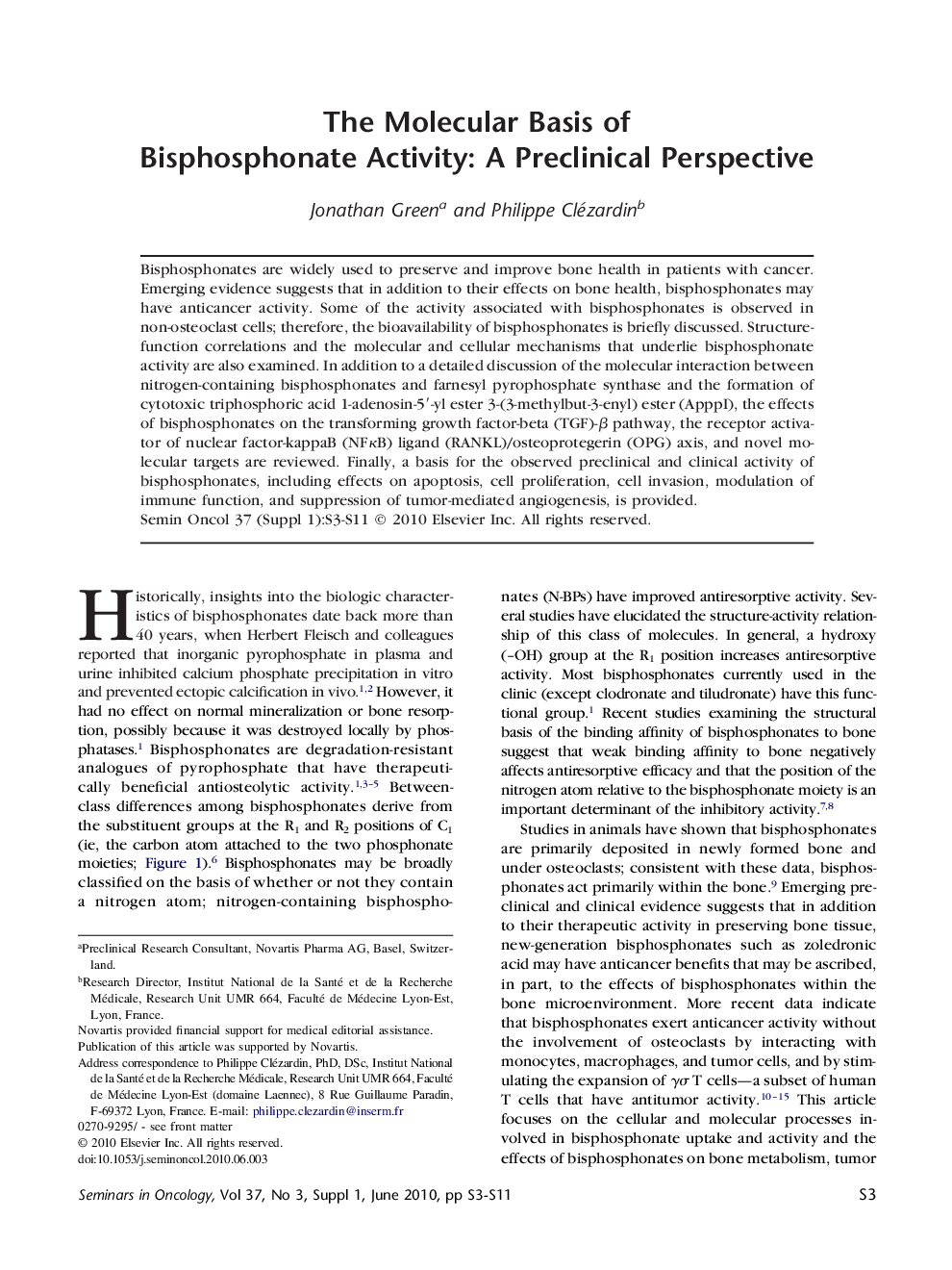| Article ID | Journal | Published Year | Pages | File Type |
|---|---|---|---|---|
| 2162475 | Seminars in Oncology | 2010 | 9 Pages |
Abstract
Bisphosphonates are widely used to preserve and improve bone health in patients with cancer. Emerging evidence suggests that in addition to their effects on bone health, bisphosphonates may have anticancer activity. Some of the activity associated with bisphosphonates is observed in non-osteoclast cells; therefore, the bioavailability of bisphosphonates is briefly discussed. Structure-function correlations and the molecular and cellular mechanisms that underlie bisphosphonate activity are also examined. In addition to a detailed discussion of the molecular interaction between nitrogen-containing bisphosphonates and farnesyl pyrophosphate synthase and the formation of cytotoxic triphosphoric acid 1-adenosin-5â²-yl ester 3-(3-methylbut-3-enyl) ester (ApppI), the effects of bisphosphonates on the transforming growth factor-beta (TGF)-β pathway, the receptor activator of nuclear factor-kappaB (NFκB) ligand (RANKL)/osteoprotegerin (OPG) axis, and novel molecular targets are reviewed. Finally, a basis for the observed preclinical and clinical activity of bisphosphonates, including effects on apoptosis, cell proliferation, cell invasion, modulation of immune function, and suppression of tumor-mediated angiogenesis, is provided.
Related Topics
Life Sciences
Biochemistry, Genetics and Molecular Biology
Cancer Research
Authors
Jonathan Green, Philippe Clézardin,
